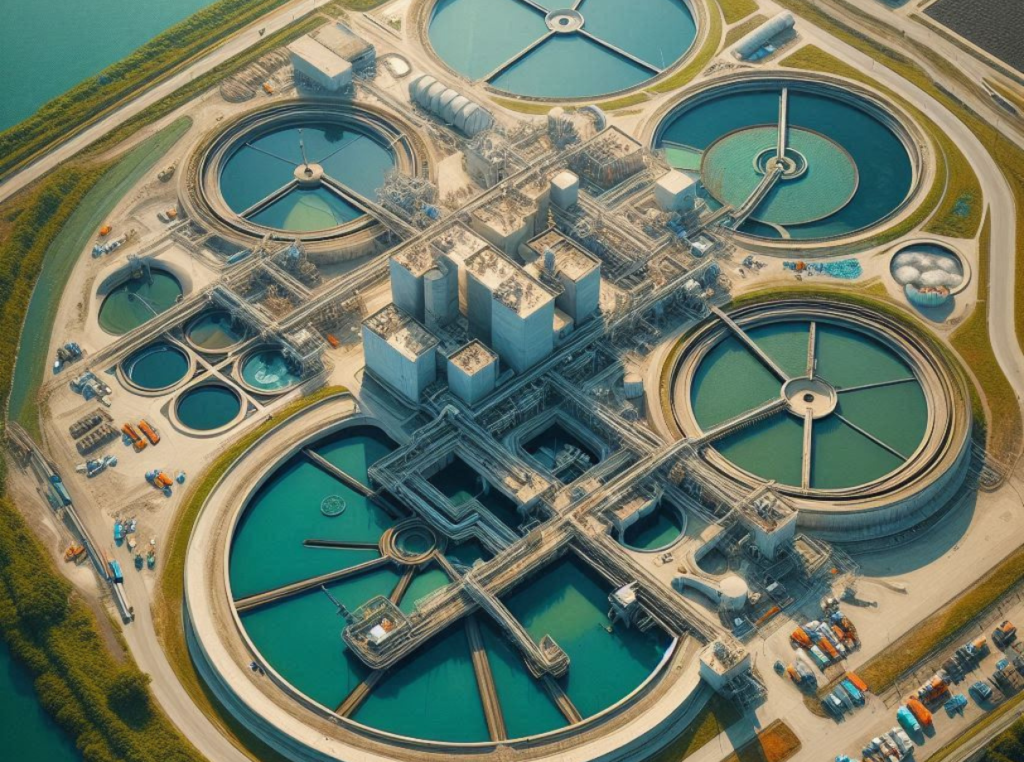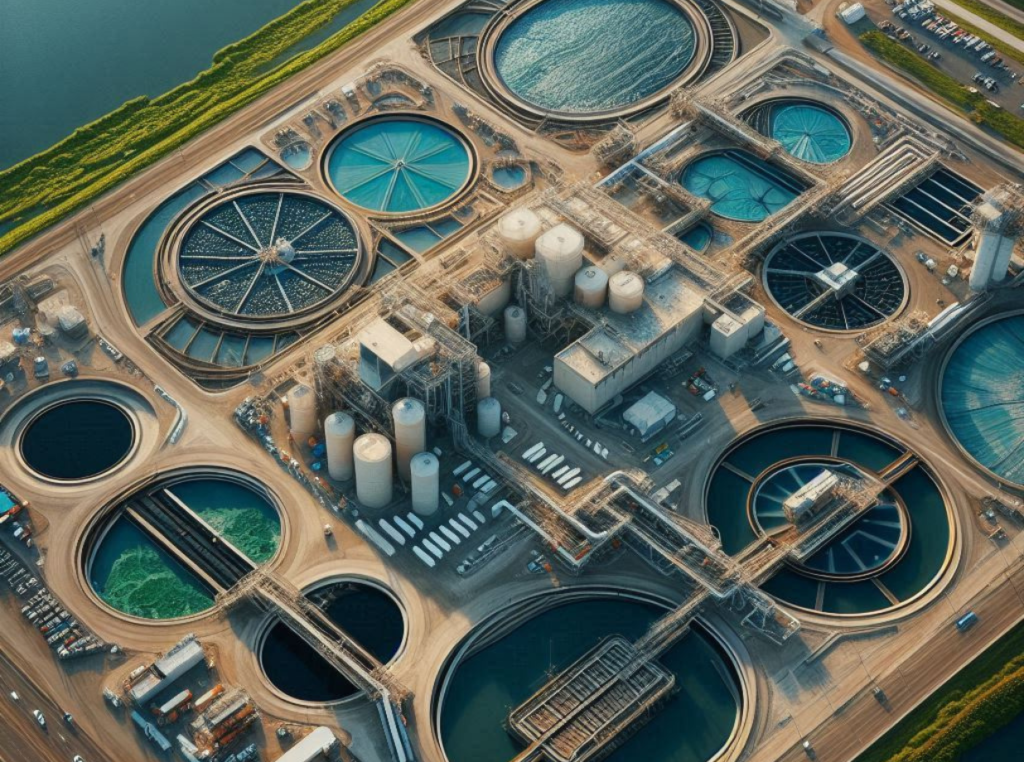The two primary types of clarifiers used in these processes are primary clarifiers and secondary clarifiers. Although they function similarly, they serve different purposes and operate under different principles. Understanding their differences can greatly enhance your comprehension of wastewater treatment systems.

What is a Clarifier?
To comprehend the distinction between primary and secondary clarifiers, you must first understand what a clarifier is. A clarifier is a settling tank used in wastewater treatment to remove suspended solids from liquid. They are pivotal in creating clear effluents and are designed to hold a mixture of liquid and solid particles long enough for the solids to settle at the bottom due to gravity. As these solids settle, the clarified liquid is typically drawn off the top of the tank and may proceed to further treatment.
Importance of Clarifiers in Wastewater Treatment
You might wonder: Why are clarifiers so important in wastewater treatment? Clarifiers are vital because they significantly reduce the load of solids that must be treated in subsequent purification stages. By removing a substantial portion of the solid particles early in the process, the efficiency of the entire treatment is improved. This not only ensures that discharged water meets environmental standards but also reduces the energy and chemicals required for further processing.
The Role of Primary Clarifiers
Function
Primary clarifiers are the initial stage of the clarification process. Their primary function is to remove large solids, oils, grease, and other debris from wastewater. They cater to the first step after the initial screening and grit removal in a wastewater treatment plant. During this stage, the incoming wastewater is slowed down to allow the heavier particles to settle to the bottom.
Operation
How exactly do primary clarifiers operate? The process is relatively straightforward. As the wastewater flows into the primary clarifier, it passes over a series of baffles that reduce its velocity. This slowdown enables solids to settle to the bottom, forming a layer known as sludge. Simultaneously, lighter substances like oils and grease rise to the surface to form scum, which is also removed. This separation helps in preparing the wastewater for more intensive secondary treatment processes.
Components
Typical primary clarifiers consist of various components, including:
- Inlet Zone: Where the wastewater enters and flow is regulated.
- Clarification Zone: The central part where settling occurs.
- Sludge Zone: At the bottom where solids accumulate.
- Surface Skimmers: That remove floating scum from the surface.
Advantages
Primary clarifiers are beneficial for their ability to significantly reduce the load of suspended solids and organic matter, leading to fewer operational challenges in subsequent treatment stages. They provide a relatively simple and cost-effective solution for pretreatment.
The Role of Secondary Clarifiers
Function
Secondary clarifiers take the treatment process one step further. Their role is to settle out biological floc, which is created in the aeration tanks during the secondary treatment phase. They work to remove the biomass that is generated during biological treatment processes, which essentially reduces the organic content of the wastewater.
Operation
The operation of secondary clarifiers is more complex than primary clarifiers. As clarified liquid from the primary clarifiers comes into the secondary treatment process, it’s mixed with an aerobic microbial community in aeration basins, where organic pollutants are metabolized. Secondary clarifiers then receive this treated wastewater to separate the biological floc from the treated water. The activated sludge settles at the bottom of the tank, while the treated effluent overflows for further processing or discharge.
Components
Secondary clarifiers typically consist of:
- Influent Pipe: Carries water from the aeration tanks to the clarifier.
- Sludge Blanket: A concentrated layer of solids that settle at the bottom.
- Effluent Weirs: Situated around the tank’s perimeter to allow clear water to flow out.
- Sludge Return System: Returns a portion of settled sludge to the aeration tanks to maintain optimal biological activity.
Advantages
The main advantage of secondary clarifiers is their ability to handle biological solids, ensuring that the effluent is of high quality and suitable for discharge or further purification stages. They play a critical role in nitrogen and phosphorus removal processes, improving the environmental outcomes of wastewater treatment.
Key Differences Between Primary and Secondary Clarifiers
By now, you should see how primary and secondary clarifiers serve distinct but interconnected roles in wastewater treatment. Their differences can be summarized in a few key areas:
| Aspect | Primary Clarifier | Secondary Clarifier |
|---|---|---|
| Purpose | Separates large solids and debris | Settles biological floc from treated wastewater |
| Stage in Process | Initial stage after screening and grit removal | After biological treatment in aeration tanks |
| Solids Handling | Removes heavier particles and scum | Focuses on settling biological sludge |
| Components | Inlet zone, clarification zone, skimmers | Influent pipe, sludge blanket, effluent weirs |
| Operation Simplicity | Generally simpler with physical separation | Complex due to biological processes |
| Effluent Quality | Preps wastewater for further treatment | Produces high-quality, low organic content water |
Understanding Their Interconnectedness
While primary and secondary clarifiers have different roles, their interconnectedness cannot be overstated. Together, they provide a comprehensive and effective means of treating wastewater so that it meets environmental standards before it is released into natural bodies of water or used for specific applications. Understanding how they complement each other can give you a clearer picture of how wastewater treatment facilities work as a whole.
Complementary Processes
Both clarifiers are complemented by additional treatment stages, including tertiary treatment processes where necessary. In some advanced systems, chemical clarifiers or daft (dissolved air flotation) systems may also be used to enhance solid separation. This ensures that remaining impurities or nutrients are removed, further polishing the effluent and enabling its reuse in various applications.
Challenges in Clarifier Operation
Even with a clear understanding of their functions, remember that operating clarifiers is not without challenges. These often include dealing with issues like sludge bulking, foaming, and managing sludge withdrawal rates. Effective operation demands careful monitoring and often involves the provision of auxiliary equipment or the application of chemical additives to improve settling characteristics.
Maintaining Efficiency
To ensure these systems run efficiently, operators must consistently monitor performance, adjust operational parameters, and carry out regular maintenance checks. Sludge blankets and the clarity of effluent water are key performance indicators that help in optimizing processes and anticipate any operational problems.

The Future of Clarification Technology
As environmental standards tighten and the demand for sustainable practices increases, advances in clarification technology are becoming more prominent. Innovations include adopting automated monitoring systems, employing advanced materials for construction, and incorporating integrated treatment processes that combine physical, chemical, and biological methods.
Role of Innovation
Innovation is not just about creating new technologies but also about optimizing existing systems. This includes electronic systems that provide real-time data on clarifier performance, ultimately driving smarter operational decisions and reducing the resource footprint of treatment facilities.
Environmental Impact
Clarifiers, especially when combined with advanced treatment methods, have a profound impact on reducing environmental pollution. Treating wastewater efficiently and effectively limits nutrient discharge into water bodies, curbs algal blooms, and protects aquatic life.
Contribution to Sustainability
As you appreciate the details of primary and secondary clarifiers, it’s crucial to understand their contribution to broader sustainability goals. By effectively removing pollutants and preparing wastewater for potential reuse, these systems are indispensable in supporting a circular approach to water resource management.
Conclusion
In your journey to understand the inner workings of wastewater treatment, recognizing the primary and secondary clarifiers’ roles is a significant step. These clarifiers, with their unique but complementary functions, form the backbone of any effective wastewater treatment process. They not only help meet rigorous quality standards but also play a pivotal role in ensuring environmental preservation and sustainable resource use. As technology evolves, staying informed about these developments will further your knowledge and appreciation of the complex systems that work tirelessly behind the scenes to keep our water clean and safe.
Resources on Primary and Secondary Clarifiers
- Fundamentals of Primary and Secondary Clarifiers
A comprehensive guide to understanding the role of clarifiers in wastewater treatment, including primary and secondary clarifier differences. - Clarifier Types and Their Applications
Learn about the different types of clarifiers and how they fit into various wastewater treatment processes. - Troubleshooting Common Clarifier Issues
A resource for addressing common issues in primary and secondary clarifiers, including sludge bulking and flocculation problems.